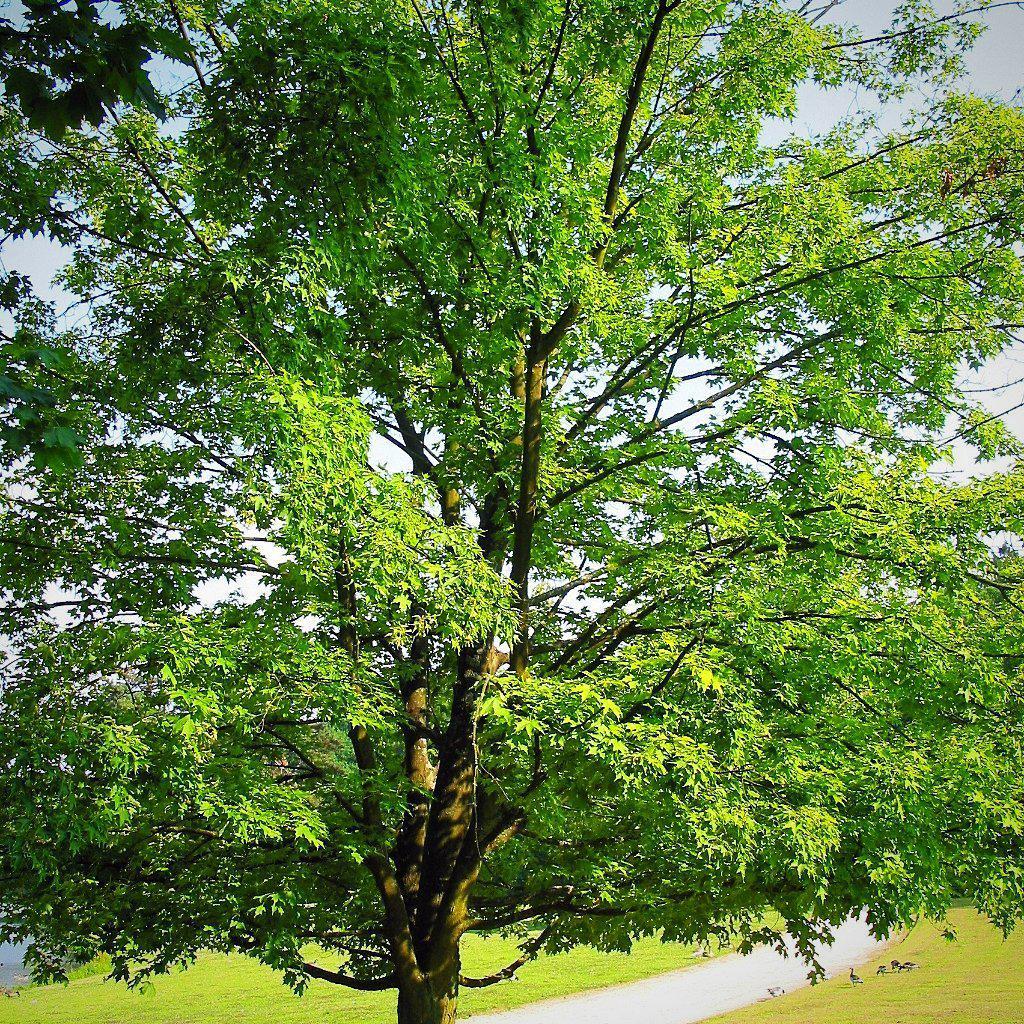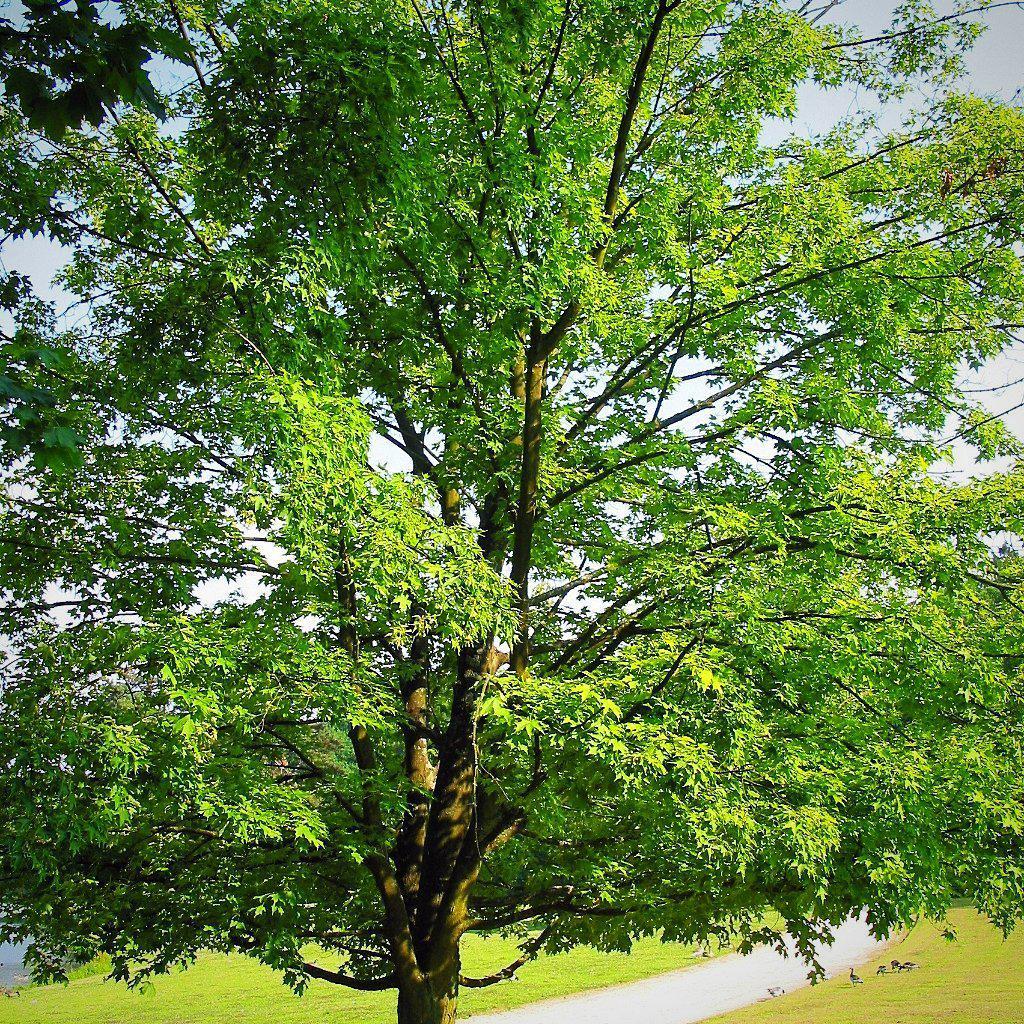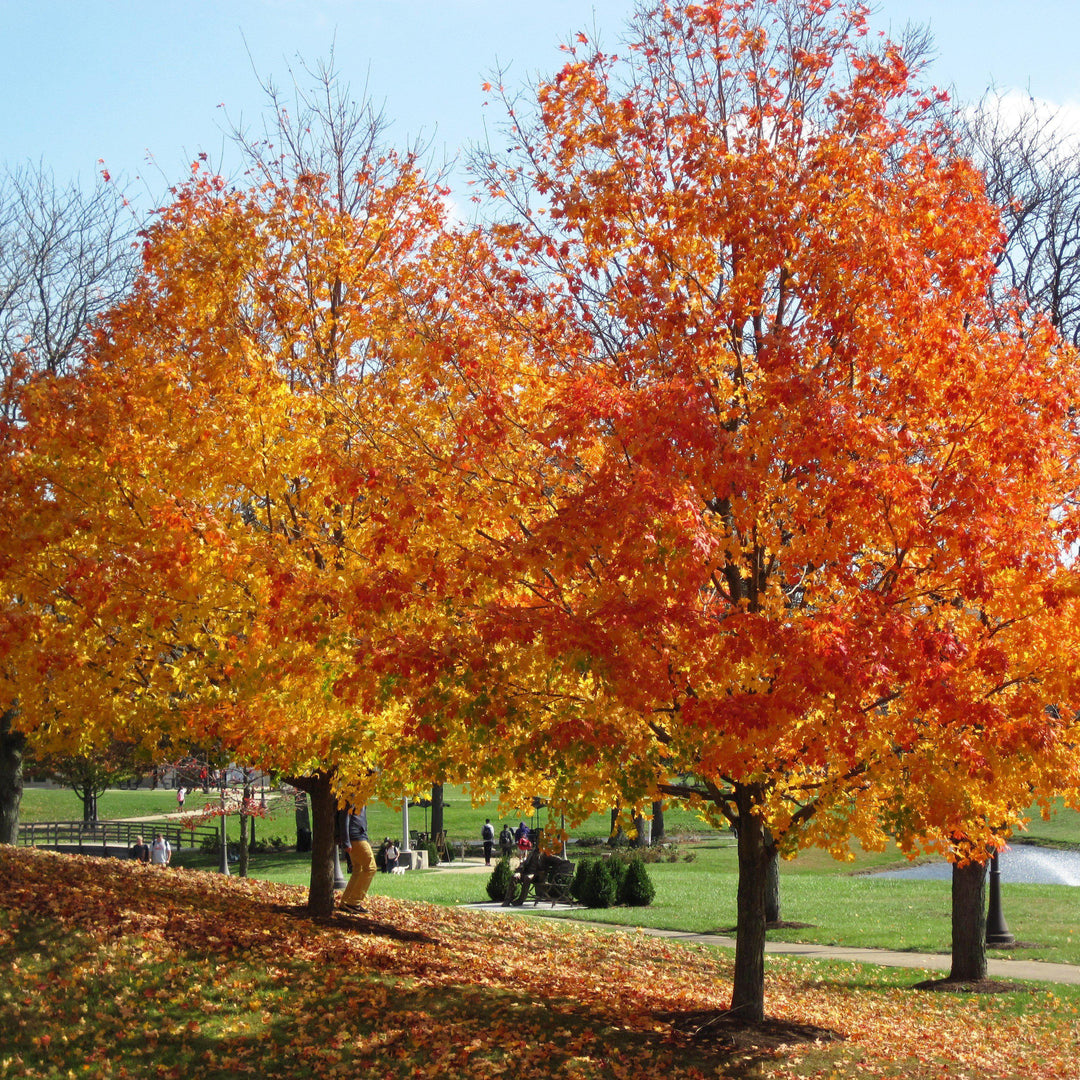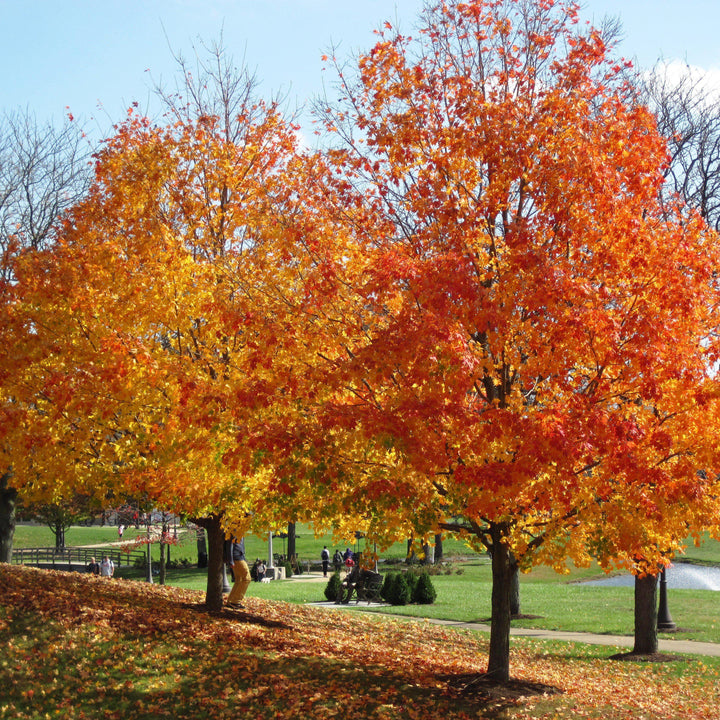The Sugar Maple, scientifically known as Acer saccharum, is a highly valued tree for its spectacular fall colors and for being the primary source of maple syrup.
This tree typically grows to a height of 60-75 feet, and sometimes even up to 100 feet in the right conditions. It has a spread of around 40-50 feet at maturity. The Sugar Maple prefers full sun to partial shade and thrives best in well-drained, moist, fertile soils. It's also known for its tolerance to cold and is hardy in USDA zones 3-8.
The leaves of the Sugar Maple are a dark green color that turns to vibrant hues of yellow, orange, and red in the fall. This tree is also known for its interesting gray bark that becomes rough and furrowed with age.
Like other maples, it's important to water this tree regularly, especially during dry periods. Pruning is best done in late summer or early fall to prevent sap bleed.
The Sugar Maple is a great choice for a shade tree in large yards and parks. It's also a favorite for its environmental benefits, as it's known to improve air quality and provide habitat for wildlife.
|
Type: |
|
|
Origins: |
Northeast N. America |
|
Height: |
40' - 80' |
|
Spread: |
30' - 60' |
|
Spacing: |
30' |
|
USDA Hardiness Zone: |
3 - 8 |
|
Culture: |
|
|
Bloom Color: |
Red |
|
Season of Interest: |
MAINTENANCE NEEDS: Medium maintenance. Water regularly. Susceptible to verticillium wilt, anthracnose, cankers, leaf spot, and tar spot. Also susceptible to aphids, borers, and scale. Leaf scorch may be a problem with drought conditions in full sun.
LANDSCAPE USES: Group Plantings or Specimen Tree, Naturalized Areas, Woodland Gardens, Privacy Screen, and Shade Tree
COMPANION PLANTS: Carex, St. John's Wort, Inland Sea Oats
IMAGES: Jean-Pol GRANDMONT, Acer saccharum JPG01, CC BY-SA 2.5, (2) Photo by James St. John, Acer saccharum (sugar maple trees in fall colors) (Newark campus of Ohio State University, Newark, Ohio, USA) (17 October 2014) 1, (3) Superior National Forest, Acer saccharum 1-jgreenlee (5098070608), CC BY 2.0, (4) mlwalker, Acer saccharum Homewood Cemetery, CC BY 2.0
*As plants have ranges in appearance they may not appear as the images shown.



























































